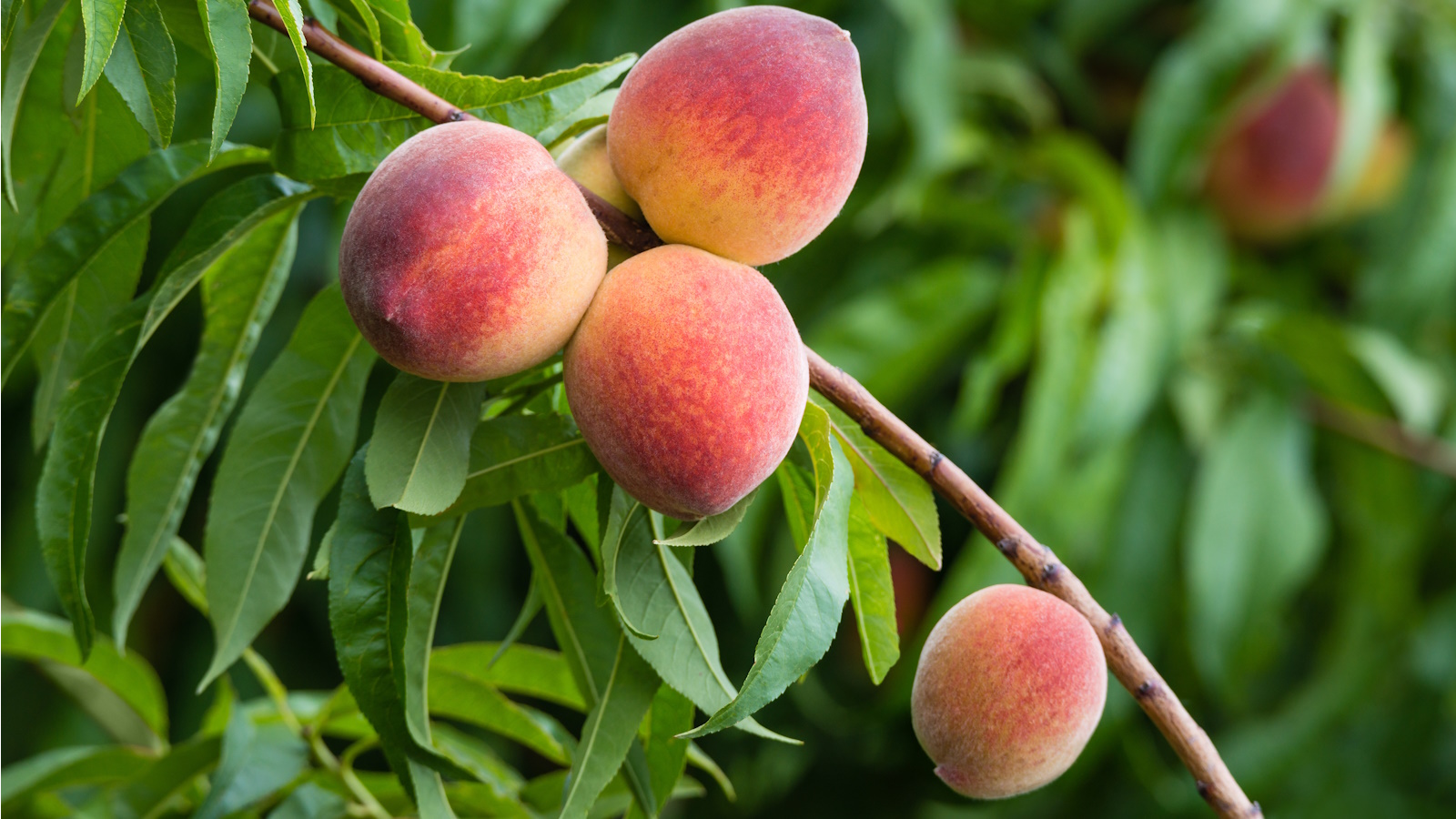
Having fruit readily available in your backyard is a delight that many gardeners will be familiar with - and others aspire to achieve. A staple for lovers of sweet summer fruit, peach trees are gorgeous specimens that boast beautiful blossoms in spring and a delicious crop in summer.
You might be planning to grow a peach tree from seed after searching among the best fast-growing fruit trees, and if you have limited outdoor space to work with you'll be pleased to know that there are even some types of peach trees in the list of the best fruit trees for small gardens.
Native to China, peach trees are now grown all over the world, growing best in US hardiness zone 4 to zone 9. They require some specific care to thrive happily, which is why we've spoken to experts to find out more about how to successfully grow and care for peach trees at home.
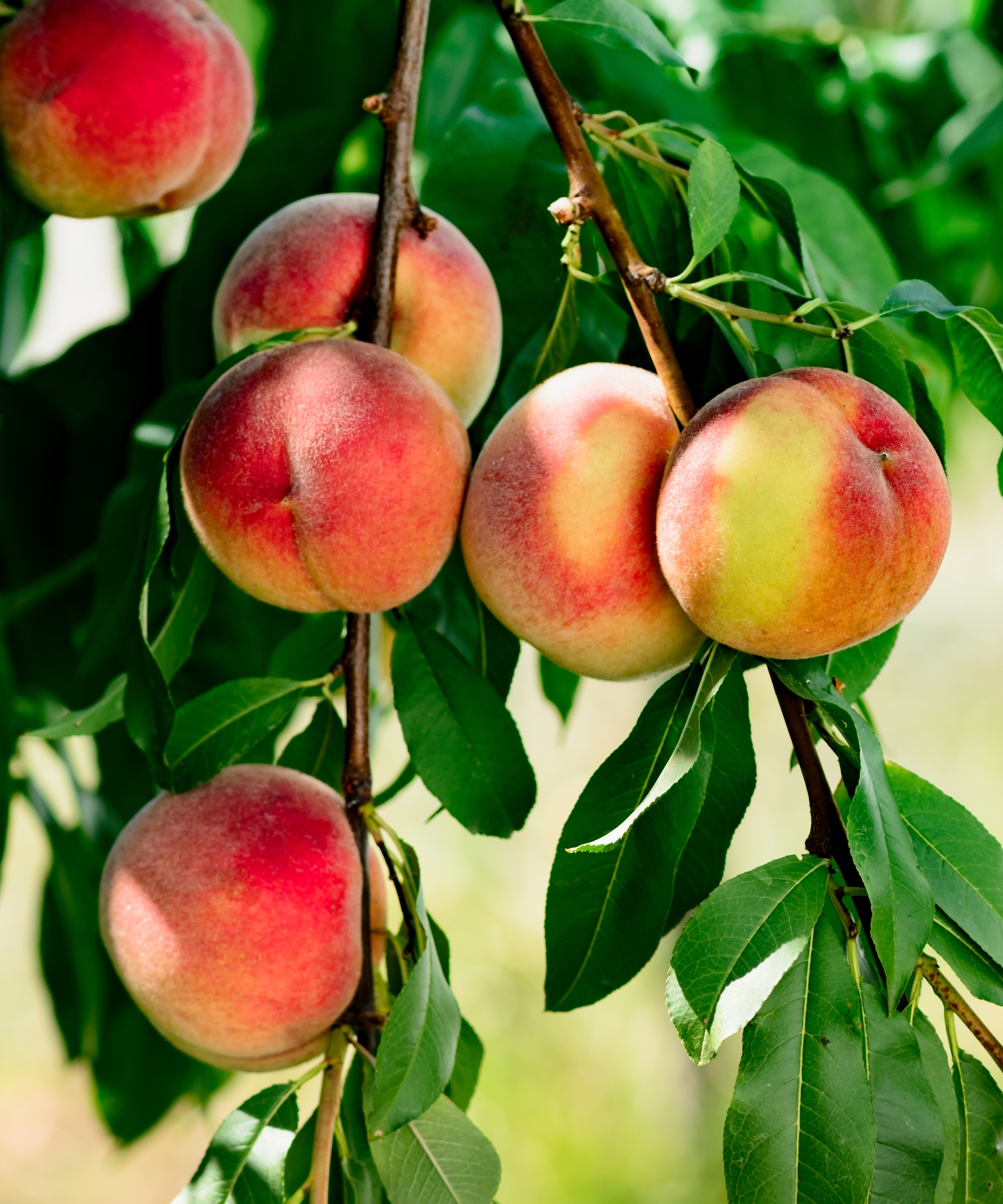
3 expert tips for growing peach trees
Some peach trees can grow as tall as 22ft, while dwarf varieties offer smaller heights of around 10ft tall. No matter the variety you're growing in your yard, all peach trees have a similar care regime that allows them to grow healthily. Here are expert tips to get you started with growing and caring for your peach tree.
1. Choose a full-sun position
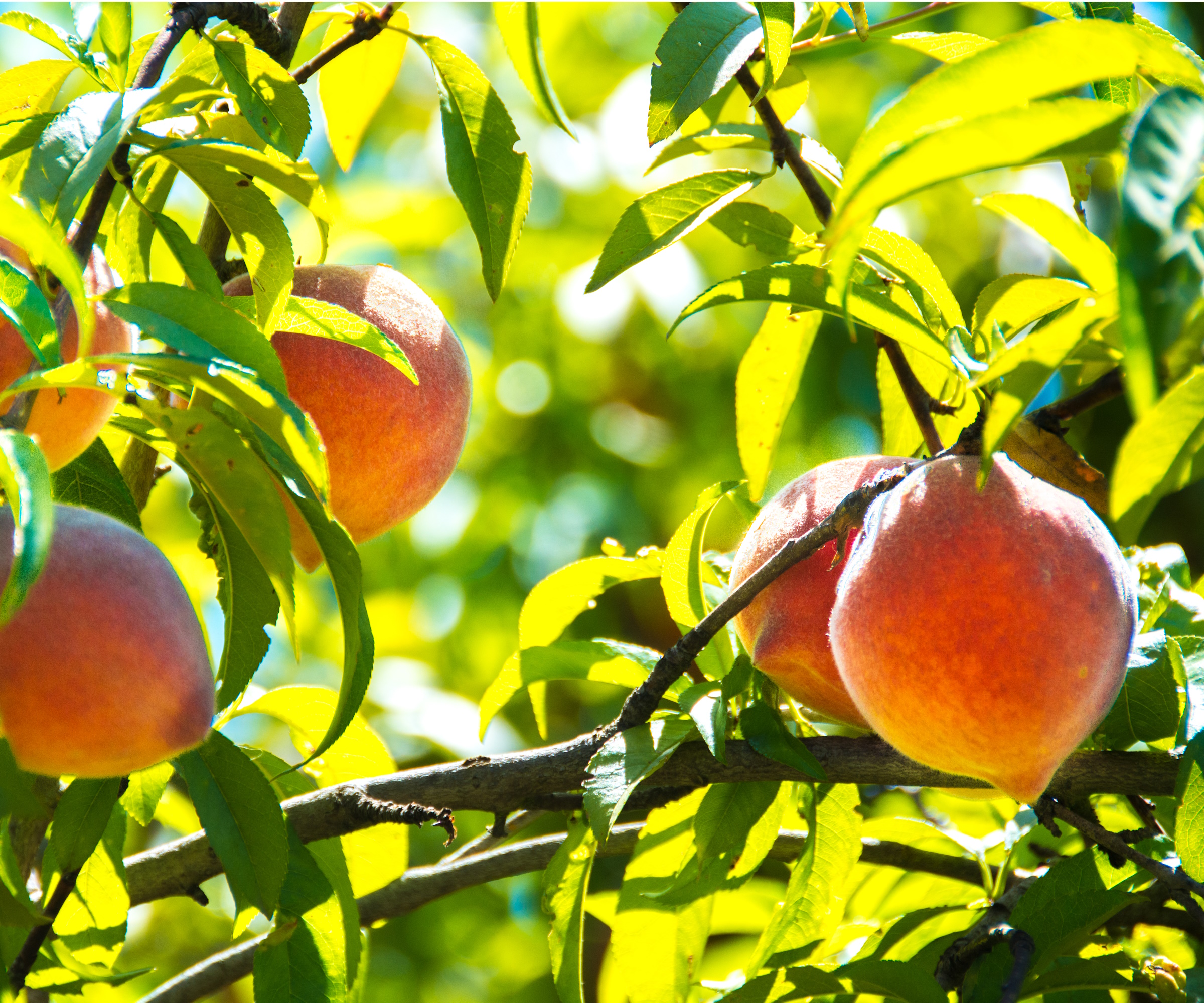
The first rule of planting fruit trees is ensuring they are in a position with plenty of sunlight. Not having enough natural light could hinder their ability to produce fruit and florals.
'Peach trees are sun-worshippers, thriving in sunny and warm yards,' says Thom Rutter, former professional gardener and content editor at Homes & Gardens. 'If you have a sheltered corner or a south-facing garden, peach trees can be grown either in the border or in a container,' he adds.
This also makes smaller peach trees an ideal fruit tree for a south-facing balcony. Whatever space you're working with, it's key to choose a full-sun position when you plant peach trees - you can even try growing peach trees indoors in a sunny conservatory.
2. Provide plenty of water and fertilizer
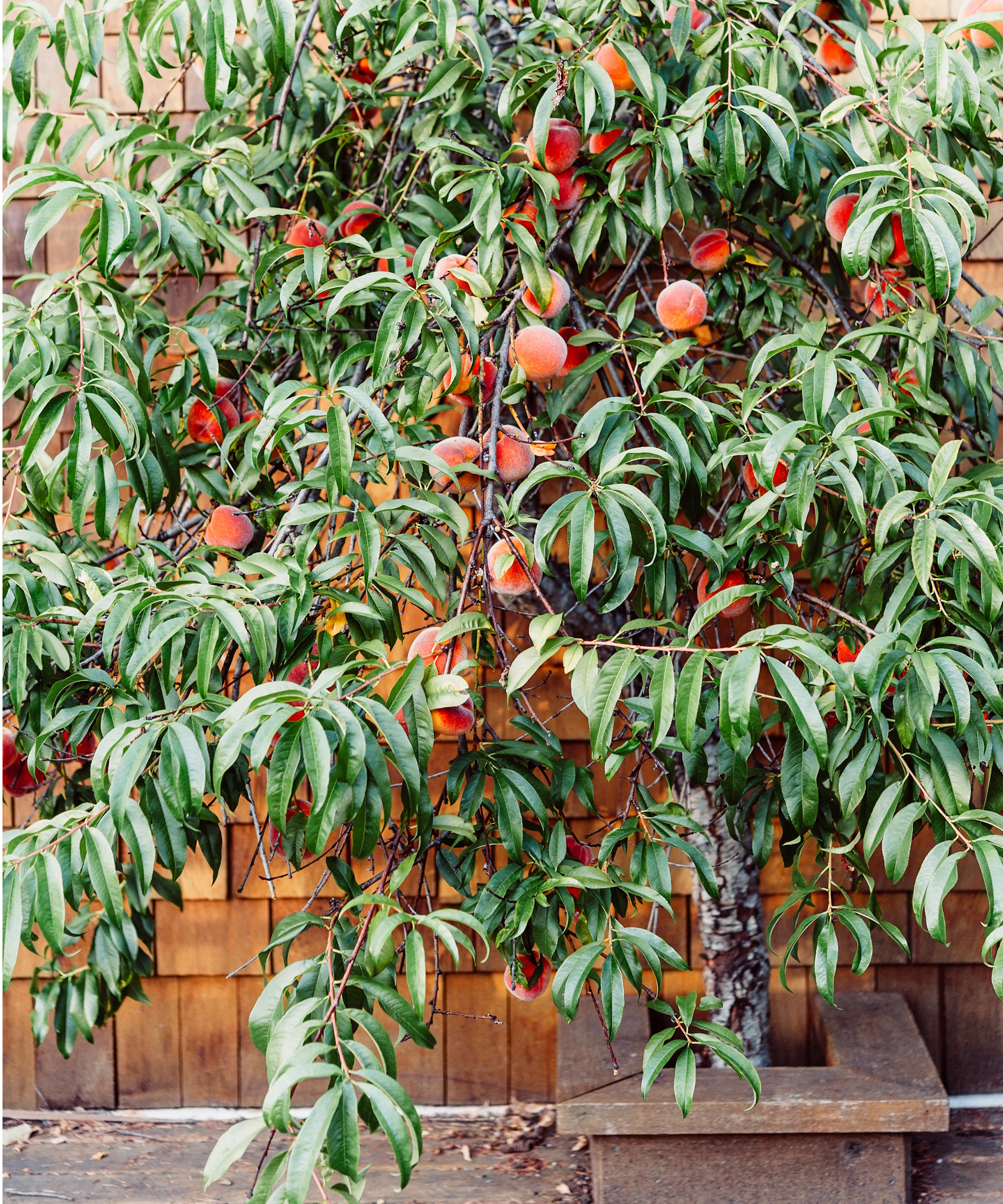
Knowing how to feed and water your plants correctly is often what determines successful fruit production. When it comes to peach trees, you should pay particular attention moisture and fertilizer levels in spring and summer.
'Peach trees grow well in fertile, rich and moisture-retentive soils, so I would recommend feeding borders the year before planting, applying a rich mulch to borders to improve the quality and nutrition of the soil,' says Thom.
Good soil health can help your peach tree receive enough nutrients. You might also want to use this liquid peach tree fertilizer from Amazon or this slow release fertilizer from Amazon when your peach tree is actively growing to boost growth further.
You should also take care to ensure your peach tree doesn't dry out entirely, as it enjoys a consistent level of moisture.
'Mulching trees with organic matter, such as compost or well-rotted manure, in spring can keep roots warm, improve water retention in the soil and smother any weeds that may compete for water and nutrients,' says Drew Swainston, former professional gardener and gardens content editor at Homes & Gardens.
There different types of mulch, but one of the most effective methods is using homemade compost.
3. Prune peach trees during active growth
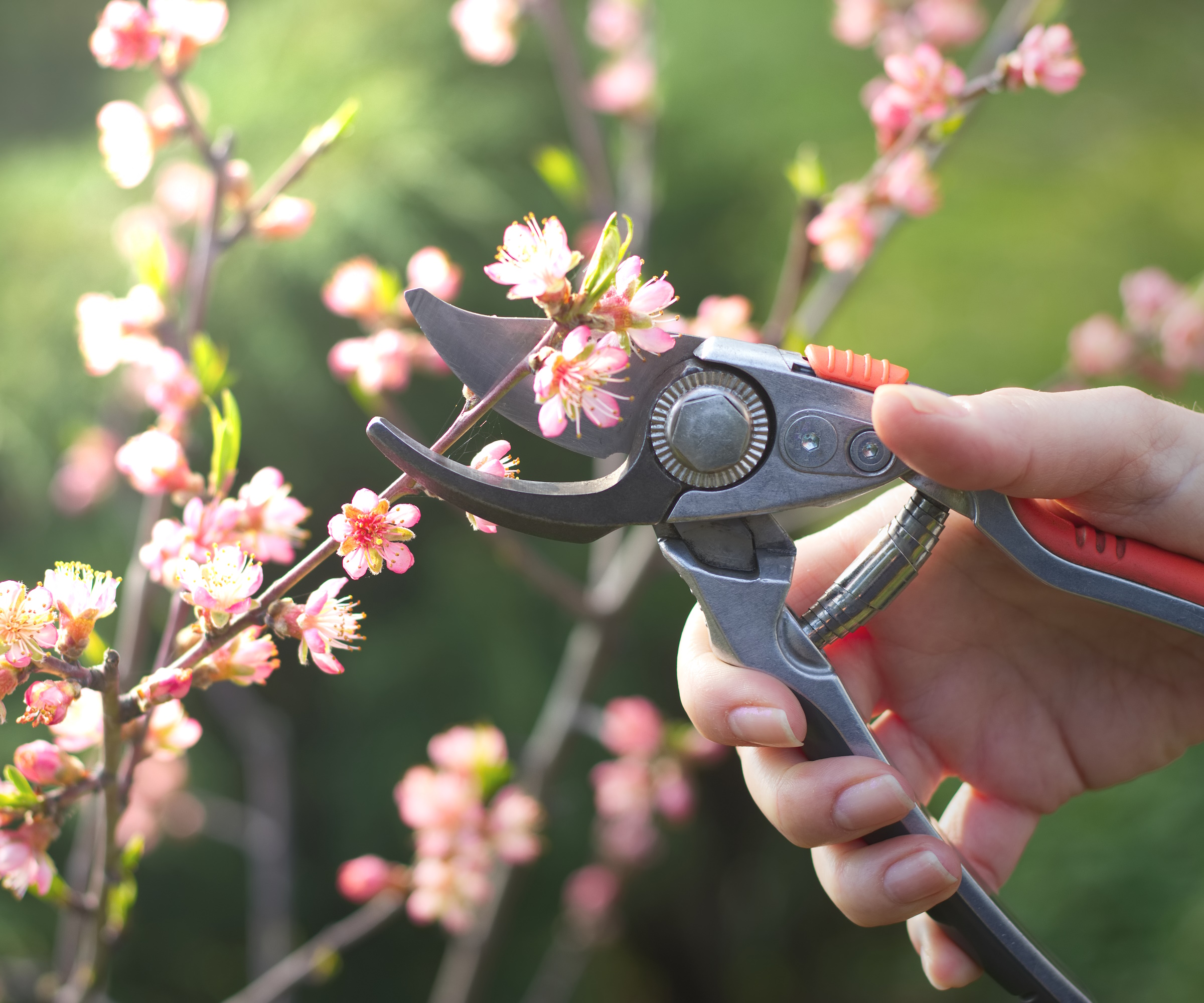
An essential care task is pruning peach trees to keep them healthy, encourage growth and prevent problems. Before you get started, make sure to familiarize yourself with pruning mistakes to avoid.
'Peach trees want to be pruned in spring or summer when they are actively growing, not during dormancy like pruning pear trees or apple trees,' says Drew.
Pruning fruit trees helps to get rid of any damaged plant material and prevent a range of diseases and problems. 'Peach trees are pruned at this time to avoid silver leaf disease, a fungal disease that can enter pruning cuts and kill leaves and branches,' Drew adds.
You should make clean cuts using sharp essential gardening tools, like these Fiskars pruning shears from Amazon, removing dead branches, rootstock suckers and any foliage blocking light from the bottom branches.
FAQs
Why are my peach tree leaves curled and dicolored?
This is known as peach leaf curl, a disease caused by the fungus Taphrina deformans. It causes the leaves to curl, go a red-brown color and distort. It's best to prune away affected foliage and put some precautions in place to protect your flower buds and fruit which can become attacked by the disease.
'It can be beneficial to cover peach trees and shelter them from rain in winter and early spring to prevent peach leaf curl from affecting buds and leaves,' says Drew Swainston, former professional gardener and gardens content editor at Homes & Gardens. 'Some growers put up a makeshift plastic tent over the trees in January and February,' he adds.
Why is my peach tree not producing fruit?
There are a number of reasons why a peach tree isn't producing fruit. The first place to start is assessing whether your peach tree is growing in optimal conditions. For a healthy harvest of peaches, your tree will need lots of sunlight, warmth and consistent moisture levels and good drainage. Although, experts also note that your local climate could cause a lack of fruit.
'While it is not impossible, gardeners in cooler zones may struggle to harvest peach fruit. This is because peach blossom tends to emerge early in the spring and buds can often be damaged by late frosts,' says Thom Rutter, former professional gardener and content editor at Homes & Gardens.
Growing and caring for peach trees may take a little time to master, but you'll be rewarded with sweet fruit and spectacular spring blossom once you've found a happy spot for your peach tree and continue providing optimal care.
If you want to create a container garden full of fruit, discover more fruit trees to grow in pots.







